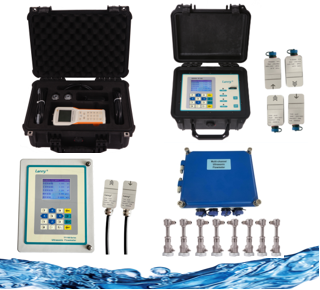When measuring liquid flow using an ultrasonic flow meter, the placement of the sensor is critical to ensuring accurate readings. In particular, installing the sensor at the top or bottom of the pipeline can introduce significant measurement errors.
1. Air Bubbles Accumulating at the Top
Liquids naturally contain some amount of dissolved gases. When the pressure drops below the liquid’s saturation vapor pressure, these gases can be released, forming air bubbles. These bubbles tend to accumulate at the top of the pipeline. Since air bubbles interfere with ultrasonic wave transmission, they weaken the signal and reduce measurement accuracy.
2. Sediment and Contaminants Settling at the Bottom
The bottom of a pipeline is where sediment, sand, rust, and other impurities tend to accumulate. Over time, these deposits can cover the ultrasonic sensor, blocking or distorting the signal. In severe cases, they may even prevent the sensor from functioning properly.
3. Optimal Sensor Placement
To avoid these issues, ultrasonic flow sensors should be installed on the sides of the pipeline, where air bubbles and sediment are less likely to interfere with the measurement process. This ensures that the ultrasonic waves can travel through a clean and consistent liquid medium, improving accuracy and reliability.
By carefully choosing the sensor installation position, users can minimize errors and maximize the performance of ultrasonic flow meters in various industrial and environmental applications.

Post time: Feb-27-2025

